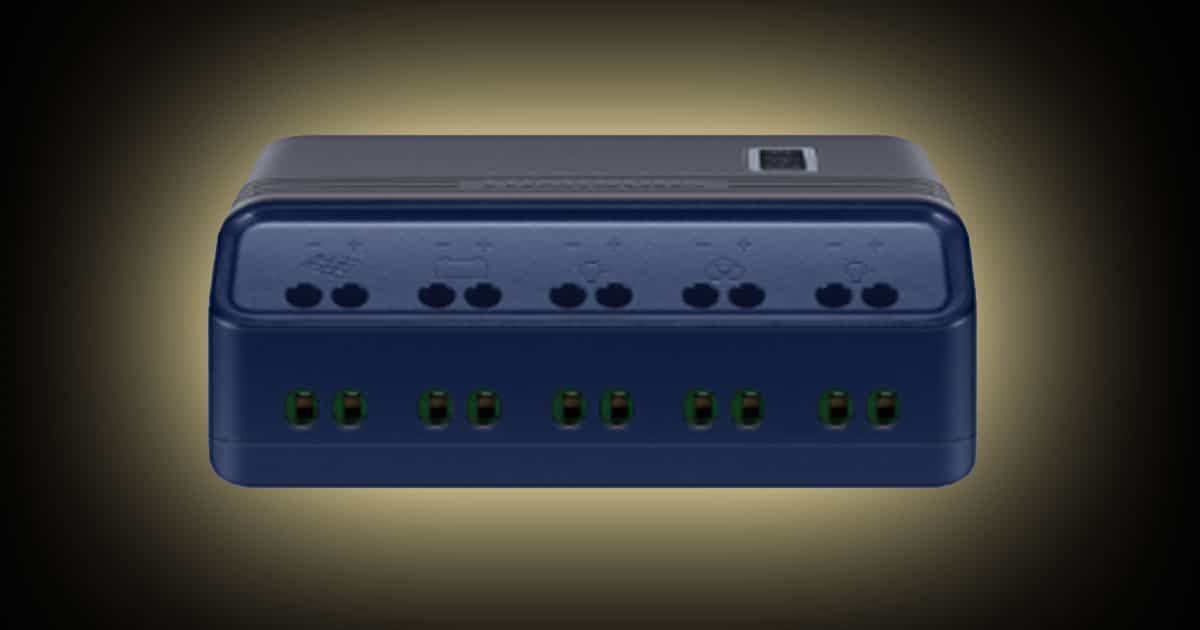A charge controller is defined as a current regulator that prevents solar batteries from getting overcharged. It monitors the voltage and current coming from the solar panels and being transferred to the battery.
A charge controller’s primary function is to ensure that the deep cycle batteries only retain the charge that is required. The power doesn’t return to the solar panels during the night and drain the batteries.

What does a Solar Charge Controller do?
To have a better understanding of a solar charge controller, we have curated a list of some of its important functions-
- It helps in delivering power from the PV array to system loads and battery banks. When the battery bank is full, the charge controller will diminish the charging current to maintain the required voltage levels to fully charge the battery and keep it topped off.
- Running batteries in a partial state-of-charge can shorten their lifespan to a great extent. Partially charged batteries will cause the plates of a lead-acid battery to become sulfated, and this will impact its life expectancy. On the other hand, running batteries to zero can quickly kill them.
- A circuit is considered overloaded when the current flowing through it is higher than it can safely handle. This can lead to a fire hazard. Built-in overload protection can be useful, but in some situations, additional safety and protection are needed.
- The solar panels work by pumping current through the battery in one direction. At night, the batteries may pass a small amount of current in the reverse direction, resulting in a slight discharge from the battery which can damage the solar panel. The charge controller prevents reverse current flow from the battery to the solar panel
- Most advanced solar charge controllers can also monitor temperature and adjust battery charging in order to optimize the charging. It is referred to as a ‘temperature compensation’; it charges to a higher voltage in cold temperatures and a lower voltage when it’s warm.
Charge Controllers come in a wide range of prices, power ratings, and features and fall into one of the two categories: Pulse Width Modulation (PWM) and Maximum Power Point Tracking (MPPT).
1. Pulse Width Modulation (PWM)
PWM Charge controllers operate by making a direct connection from the solar array to the battery bank. During bulk charging, there is a continuous connection between the array to the battery bank. As a result, the array output voltage is pulled down to the battery voltage. As the battery charges, the voltage of the battery rises, so the voltage output of the solar panels rises.
2. Maximum Power Point Tracking (MPPT)
MPPT controllers are much more sophisticated. They can adjust the input voltage and current of the PV array to find the optimum operating voltage that will help generate the most power at a given time.
Things to Look for in a Charge Controller
It is very important to choose the right charge controller in terms of its size and features. For remote systems, reliability and performance are important factors.
Small charge controllers should be designed in a manner that they can take the beating as they deal with a lot of heat. They have the advantage of being fanless, which means they get rid of heat by passive cooling.
By eliminating the fan, you can achieve three advantages-
- Higher Reliability- Fans have moving parts; usually, the fan is the only component with moving parts on a charge controller. By eliminating the fan, you eliminate the most common point of failure.
- Longer Life- Fans pull in dirt, dust, and even insects, and this can clog the charge controller’s insides and shorten its lifespan.
- Greater Efficiency- Fans operate by electricity, and that electricity comes from solar electricity flowing from the panels.
Upgrade Your PV System with the Best Charge Controller
Reputed companies like Luminous offer the best range of solar charge controllers, which helps in converting the existing power backup systems into a solar system with minimal investment. With an inbuilt low voltage disconnect, automatic battery selection, and USB port for DC load connection, gear up to get the best charge controller for your PV system.
